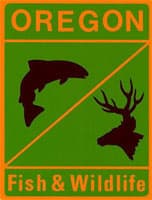Make the Most of Your Child’s Big Game Hunting Opportunities in Oregon
OutdoorHub 05.09.13

Many parents don’t know it but youth (ages 12-17) are guaranteed a controlled buck, antlerless deer and elk tag (100, 600 and 200 series) before they turn 18 under a special program called the “First Time Hunt” program. Here is how the program works:
- Youth must apply in the regular controlled hunt draw (deadline May 15) and not draw a tag.
- Once a youth draws a tag in a series, they are no longer eligible for the “First Time Hunt” program for that series.
- After failing to draw a tag, youth should apply for a guaranteed First Time Hunt from July 1-Sept. 1.
- Fill out the application and submit to Licensing Division from July 1-Sept. 1.
- Youth must choose a hunt that meets the minimum tag allocation (at least 201 tags for buck deer/100 series hunts and 51 tags for elk/200 series and antlerless deer/600 series hunts). ODFW posts eligible hunts on the First Time Hunt page in late June of each year.
“First time” tags are only for fully hunter education certified youth. Youth hunting under this program may not hunt under the Mentored Youth Hunter Program for that particular hunt for that year. “First time” hunts are also not extra tags; youth are still limited to the maximum number of tags per series per year.
Maximize your child’s preference points
Avid hunter and software engineer Ron Wold runs the free Oregon Tag Draw Percentages website to help hunters figure out their chances each year. Recently he received a question on hunt 175T (Interstate Unit), a sought-after youth hunt.
“The question was, how could this hunt require seven preference points, given that it’s a youth hunt and a kid could only have acquired five preference points by age 17, their last year of eligibility,” says Wold. “But by age 17, any kid who went after every preference point could have 13 or more preference points to put towards a series.”
Here’s how: by applying for point savers beginning at age 9 and participating in the Mentored Youth Hunter Program (MYHP) each year from age 9-13. Though 12 is the minimum age for kids to hunt big game on their own tag, they may start applying for point savers at age 9. (A hunting license is required, only $14.50 for resident youth and $19.50 for non-resident youth.)
Also, thanks to a new program that allows hunters to purchase point savers from July 1-Nov. 30 each year, any kid that turns 9 by Nov. 30 can purchase a point saver for that year. “It used to be that kids born after May 15 were out of luck on getting a preference point for that year,” said Wold. “But that isn’t the case anymore.”(ODFW put the program in place last year to enable people to spread the cost of licenses and tags throughout the year. A mail order application for a 2013 point saver will be available online by July 1.)
So simply by applying for points savers each year, a youth could have nine points by age 17, the last year of eligibility for youth hunts.
Participating in the Mentored Youth Hunter Program each year from age 9-13 can net kids additional points. Each calendar year (Jan. 1-Dec. 31) that a youth registers for the program, he or she banks one MYHP preference point for that year. (MYHP registration is free and all done online or at a license sales agent or ODFW office that sells licenses.)
Some special rules apply to these MYHP points. They are banked separately from regular preference points until a youth fills out this Request to Redeem form. When redeeming MYHP points, a youth must put them all towards one hunt series.
MYHP points remain banked until the Request to Redeem is received and processed by ODFW Licensing. These special points don’t expire and youth may redeem them after they turn age 18. Once redeemed, MYHPs operate just like regular preference points.
“In a few years, it’s possible that some of the premiere youth hunts could require 11 or more points to draw,” says Wold. “Only youth who enrolled in these programs early on will be eligible so folks in the know on how these points work will have a big advantage.”

